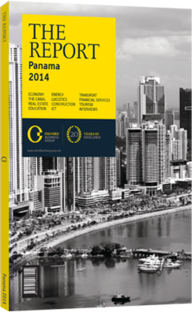Carlos Karamañites, Partner, KPMG Panama, on tax developments

The government has been very active in the tax arena, proposing more than 10 tax bills between 2009 and 2013. These tax reforms and amendments have covered direct and indirect taxation. Corporate tax rates were reduced, while indirect taxes have been increased. Still, Panama has one of the lowest value-added tax rates in the region (7%). Tax revenue has risen from $2.3bn in 2009 to $5bn in 2013. The efforts to improve tax collection were also driven by an aggressive public investment plan, focused on consolidating Panama as a major transport hub by developing efficient port and airport networks, while the country’s financial market and adoption of modern technologies continue to improve as more multinational corporations set up operations in the country. Despite the increase in the tax burden, Panama is one of the highest ranked nations in Latin America, according to the World Economic Forum’s “Global Competitiveness Report 2013-14”, published in September 2013.
For financial accounting purposes, in 2005 Panama adopted international financial reporting standards, with the purpose of increasing the levels of transparency and comparability. Based on comments and suggestions by business and professional associations, an administrative tax court, operating independently from the tax administration, was created in 2010. Its main tasks are to deal with concerns of taxpayers about having their cases reviewed by the tax administration itself and also to reinforce fairness in tax litigation. The Ministry of Economy and Finance and the administrative tax court are leading an effort to produce a new tax code to streamline the administrative procedures involving discussions between the tax administration and taxpayers, to shorten the timeframe to solve these tax disputes and to better protect taxpayers’ rights.
Panama has also embraced international tax cooperation by entering into 19 double-tax agreements and 10 tax-exchange information agreements, the majority of which are currently in force. In 2010 Panama also adopted a transfer pricing regime which basically follows the OECD transfer pricing guidelines for multinational enterprises and tax administrations.
For multinational enterprises investing in Panama, these developments in the international tax area should result in increased certainty and legal stability.
Panama’s income tax is driven by a territorial system as opposed to a worldwide taxation system. Apart from specific exceptions, only income generated locally is subject to income tax, while income arising from foreign sources is not. Taxable income is defined as income produced from any source within Panamanian territory, regardless of the place where the income is received.
The fast pace of changes involving tax rules and regulations has required local and multinational businesses to focus on planning any potential tax consequences arising from new investments. For example, there are several tax incentive regimes, such as the Colón Free Zone, the Panama Pacific Economic Area, the Multinational Headquarters Regime and the City of Knowledge Regime, that should be considered when evaluating opportunities to invest in Panama, for instance, in trade and logistic activities or research, development and implementation of new technologies. This would allow reducing and/or eliminating indirect tax costs and exempt income obtained from certain qualifying activities. These measures have attracted many multinational groups, and more are expected to arrive. On the other hand and following the general trend at the international level, the government is focusing on collecting additional taxes to fund its public expenditure and social programmes. Thus, the tax administration is more aggressive in its efforts to monitor compliance, so it is up to the management of businesses to keep up with new developments in the tax field.
So far, Panama has successfully attracted foreign direct investment and collected the taxes required to meet its public expenditure needs. It remains to be seen if further tax changes will be required. However, based on recent history, it seems that a period of stability of the applicable tax rules would be welcome.
You have reached the limit of premium articles you can view for free.
Choose from the options below to purchase print or digital editions of our Reports. You can also purchase a website subscription giving you unlimited access to all of our Reports online for 12 months.
If you have already purchased this Report or have a website subscription, please login to continue.

